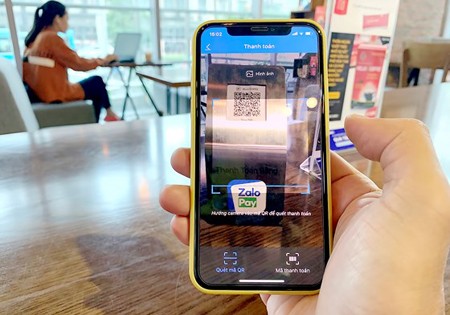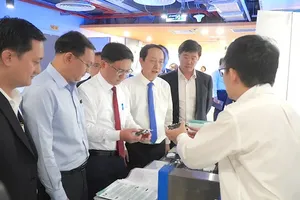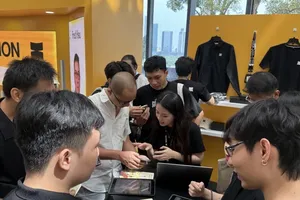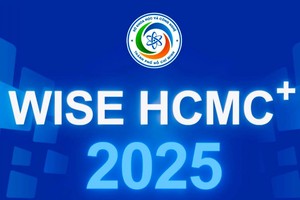
Attractive benefits
With a smartphone at hand, the task of paying for utility bills like electricity, water, Internet, and cable television seem so simple via a few actions using an electronic wallet. This special wallet also saves consumers much time while allowing them to use everywhere.
Some popular e-wallet services in Vietnam now are MoMo, ZaloPay, ViettelPay, Payoo, and Moca.
Statistics from the National Bank show that until November 2018, 26 financial institutes that are not banks have been approved to become an intermediary in delivering the payment service, 23 of which offer e-wallet service and are divided into 2 groups of financial technology (Fintech) companies as well as telecommunications businesses.
Because Fintech companies always strive to maintain healthy connections with as many banks as possible and have the widest network possible, most of their e-wallet services have the common feature of offering the highest discount rate for one time of adding money into an account, or launching the reward point program, along with regular promotions.
Take ZaloPay as an example. Besides being accepted in most banks, shops, and supermarkets in Vietnam, it is now trying its best to create a strong user community so that it becomes more widely known and to improve its technical ability to process information as well as ensure cyber security. It is also encouraging the use of Quick Response (QR) code. As said by the Marketing Director of ZaloPay, the service has around 1.2 million retail locations nationwide. Therefore, it is costly and inefficient to equip them with Point of Sale Machine (POS) while installing a small poster with QR code in a size of a notebook is much more convenient. What users need to do is to scan this code into their smart devices.
Another famous e-wallet in Vietnam is MoMo, which aims at a digital platform to serve all possible demands in daily life of a user. It has already integrated all necessary daily services into its application so that users can pay for their food, commodities, transport tickets, entertainment services, or even hotel charges.
Dangerous drawbacks
As usual, Mr. T.Q.Son from District 5 in Ho Chi Minh City (HCMC) enters a Starbucks Café to buy a cup of coffee. However, he soon feels shocked when he is asked to apply for a membership card with positive balance if he wants to save his reward points. This means he needs to add money into the card and use it for payment in the Café instead of using his normal bank card.
What is illogical here is that Starbucks now can keep customers’ money without paying back any interest. With around 1 million customers, each of whom deliver VND100,000 (approx. $4.3) into their own account, a shop like Starbucks now possess about VND100 billion ($4.3 million) to freely use without any concern.
This payment method, known as a service account, is popular in many entertainment locations nowadays like cinemas or theme parks for children and requires careful consideration of users.
E-wallets also have their disadvantages. Ms. Tran from District 1 in HCMC wants to use Moca e-wallet to pay for her Grab charge. However, she discovers that her account is temporarily closed. She cannot enter the code sent previously via SMS and the operator of Moca says that there must be a connection error, suggesting that she should re-sign in after a few hours.
Many other customers also voiced their annoyance when they were forced to activate the recently implemented e-wallet GrabPay of Moca before they were able to pay for their Grab charge. Otherwise their current money in GrabPay Credits, which might be millions of Vietnam Dong ($43), cannot be accessed.
In short, consumers need to be well aware of all benefits as well as drawbacks of all digital payment methods that they choose to use by carefully research necessary information related to providers. Simultaneously, it is essential for state offices to monitor the daily cash flow of these providers sensibly.
























